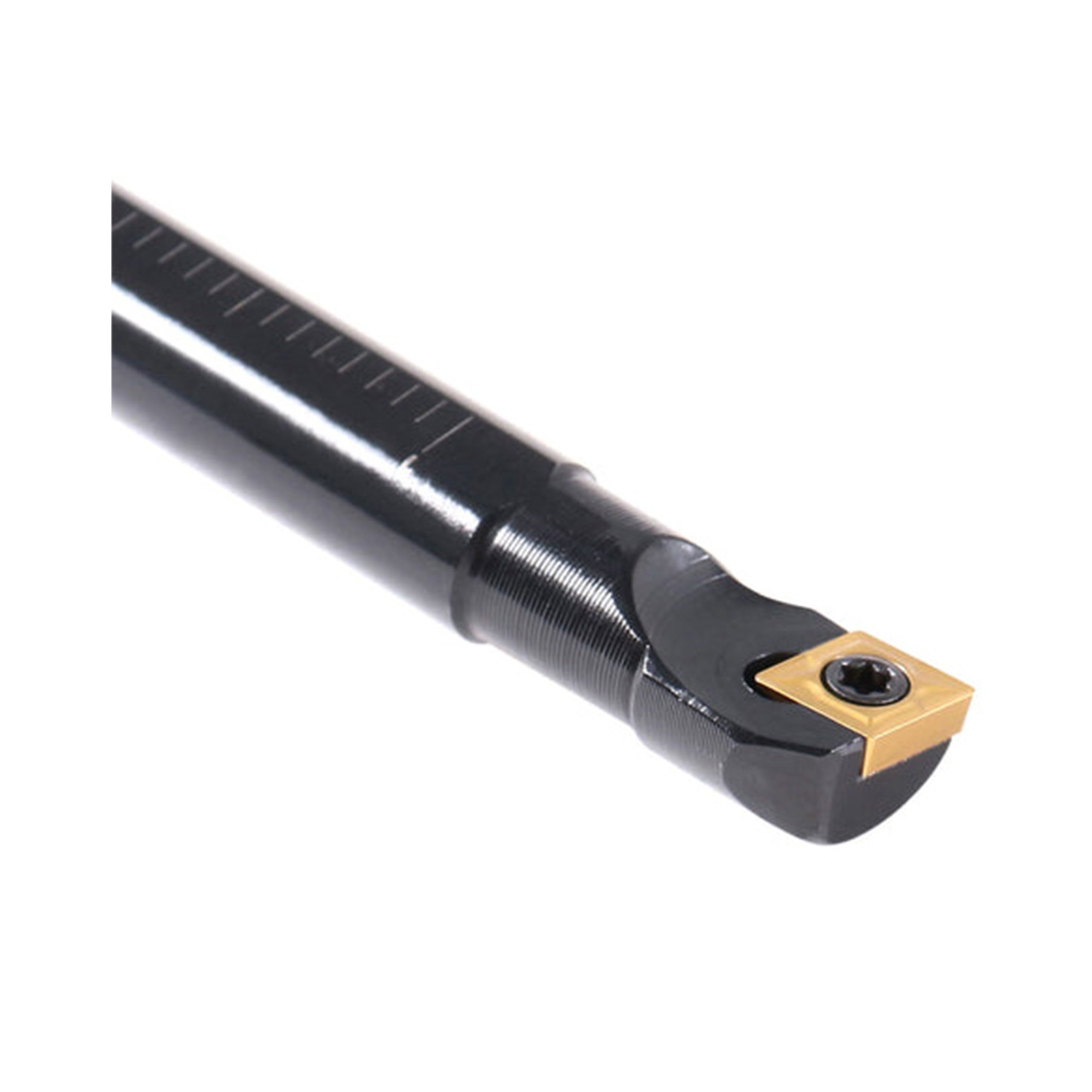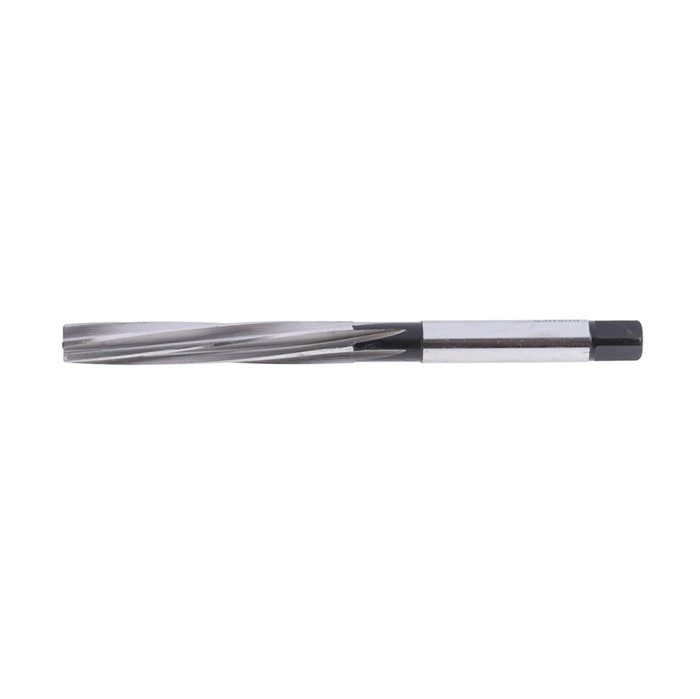threading tool
Threading tools are essential for creating or repairing screw threads on various materials. They include taps for internal threads, dies for external threads, and related accessories. This guide explores the different types of threading tools, their applications, and best practices for achieving precise and durable threads.What are Threading Tools?Threading tools are specialized instruments used to cut threads, helical ridges used to fasten parts together. These threads can be internal (like those inside a nut) or external (like those on a bolt). The most common threading tools are taps and dies, but the category also encompasses various accessories like tap wrenches, die stocks, and thread gauges.Types of Threading ToolsTapsTaps are used to create internal threads in pre-drilled holes. They come in sets, typically including a taper tap, a plug tap, and a bottoming tap. Here's a breakdown: Taper Tap: Features a gradual taper that eases the starting of the thread. Ideal for initial threading. Plug Tap: Has a less pronounced taper and is used after the taper tap to create a more complete thread. Bottoming Tap: Designed to cut threads all the way to the bottom of a blind hole (a hole that doesn't go all the way through).High-speed steel (HSS) taps are common for general-purpose use, while carbide taps are preferred for harder materials. Always consult manufacturer's recommendations for optimal tap selection.DiesDies are used to cut external threads on rods or bolts. They are typically held in a die stock, which provides leverage for turning. There are two main types of dies: Round Adjustable Dies: These dies can be adjusted to slightly alter the thread size, allowing for minor corrections or adjustments. Hex Dies: Typically used for thread cleaning and repair rather than cutting new threads.Like taps, dies are also available in HSS and carbide, with carbide dies being suitable for harder materials.Threading Tool AccessoriesSeveral accessories enhance the use of threading tools: Tap Wrenches: Provide leverage for turning taps. Die Stocks: Hold dies securely and provide leverage for turning. Thread Gauges: Used to verify the accuracy and pitch of the threads. Cutting Oil: Lubricates the threading tool and workpiece, reducing friction and heat, and improving the thread quality. Look for cutting oils specifically designed for the material you are working with.Applications of Threading ToolsThreading tools are used in a wide range of industries and applications, including: Manufacturing: Creating threaded fasteners and components for machinery and equipment. Automotive Repair: Repairing damaged threads on vehicles. Plumbing: Creating threads on pipes and fittings. Construction: Fastening structural elements together. DIY Projects: Home repairs and hobbyist projects requiring threaded connections.How to Use Threading Tools: A Step-by-Step Guide Prepare the Workpiece: Ensure the workpiece is clean and free of debris. For tapping, drill a hole of the correct size (refer to a tapping chart for the appropriate drill size). For threading with a die, chamfer the end of the rod to ease the starting of the die. Lubricate: Apply cutting oil to both the threading tool and the workpiece. Start the Thread: For tapping, align the tap squarely with the hole and turn it clockwise while applying downward pressure. For threading with a die, align the die with the rod and turn it clockwise while applying pressure. Cut the Thread: Turn the threading tool a few turns clockwise, then back it off slightly to break the chip and clear the threads. Continue this process until the desired thread length is achieved. Clean and Inspect: Remove the threading tool and clean the threads with a brush. Inspect the threads for accuracy and quality using a thread gauge if necessary.Tips for Successful Threading Use the Right Tool: Select the appropriate tap or die for the material and thread size. Apply Cutting Oil: Lubrication is crucial for reducing friction and heat. Go Slowly: Avoid forcing the threading tool, as this can damage the tool or the workpiece. Back Off Regularly: Breaking the chip helps prevent the tool from binding and improves thread quality. Keep Tools Sharp: Dull threading tools are more likely to produce poor-quality threads. Wayleading Tools Suggests: Consider investing in a quality set of threading tools from a reputable manufacturer like Wayleading Tools. Proper maintenance, including cleaning and oiling after each use, will extend the life of your tools.Troubleshooting Common Threading Tool ProblemsHere are some common problems encountered when using threading tools and their solutions: Problem Possible Cause Solution Broken Tap or Die Excessive force, incorrect drill size (for tapping), dull tool Reduce force, use the correct drill size, sharpen or replace the tool Stripped Threads Oversized hole (for tapping), worn die (for threading), insufficient lubrication Use a smaller drill size, replace the die, apply more cutting oil Rough Threads Dull tool, insufficient lubrication, incorrect cutting speed Sharpen or replace the tool, apply more cutting oil, reduce cutting speed Choosing the Right Threading Tool SetSelecting the right threading tool set depends on the types of projects you'll be undertaking. Consider the following factors: Material: HSS sets are suitable for general-purpose use, while carbide sets are recommended for harder materials. Thread Size: Choose a set that includes the thread sizes you'll be working with most often. Completeness: A comprehensive set should include a range of taps, dies, tap wrenches, die stocks, and thread gauges. Quality: Invest in a high-quality set from a reputable manufacturer for long-lasting performance.ConclusionMastering the use of threading tools is a valuable skill for anyone involved in manufacturing, repair, or DIY projects. By understanding the different types of threading tools, following best practices, and troubleshooting common problems, you can create accurate and durable threads for a wide range of applications. Whether you are repairing a damaged bolt or creating new threaded components, having the right threading tool at your disposal will ensure a successful outcome. Remember to always prioritize safety and use the correct tools and techniques for the job.
Related products
Related products
Best selling products
Best selling products-
 Precision V Block And Clamps Set With Industry Type
Precision V Block And Clamps Set With Industry Type -
 Precision Straight Shank To Morse Taper Adapter
Precision Straight Shank To Morse Taper Adapter -
 Round Die Wrench For Thread Cutting Tools
Round Die Wrench For Thread Cutting Tools -
 Precision Dial Caliper Of Metric & Imperial For Industrial
Precision Dial Caliper Of Metric & Imperial For Industrial -
 3 Flutes HSS Counterbore Drill Bit With Metric And Inch Size
3 Flutes HSS Counterbore Drill Bit With Metric And Inch Size -
 Deburring Tool Blades Using For Deburring
Deburring Tool Blades Using For Deburring -
 9PCS Broken Tap Extractor Set With Storage Box
9PCS Broken Tap Extractor Set With Storage Box -
 HSS 3PCS DIN352 Hand Tap Set With Taper And PLUG Or Bottoming Tap
HSS 3PCS DIN352 Hand Tap Set With Taper And PLUG Or Bottoming Tap -
 Key Type Drill Chuck With Heavy Duty Type
Key Type Drill Chuck With Heavy Duty Type -
 GTN Parting & Grooving Insert For NCIH Blade
GTN Parting & Grooving Insert For NCIH Blade -
 25PCS DIN338 HSS Twist Drill Bit Set From 1-13mm
25PCS DIN338 HSS Twist Drill Bit Set From 1-13mm -
 Precision Outside Micrometer Set With digit Counter Of Inch & Metric With Rachet Stop
Precision Outside Micrometer Set With digit Counter Of Inch & Metric With Rachet Stop
Related search
Related search- single angle milling cutter
- er32 collet set Manufacturer
- High-Quality tapered reamer
- Convex Milling Cutter Supplier
- dovetail angular cutter set Factories
- 30pcs indexable boring bar set Manufacturers
- er collet block Manufacturer
- SVAC turning tool holder Manufacturer
- Wholesale Hand Reamer
- 5c collet chuck Manufacturer











